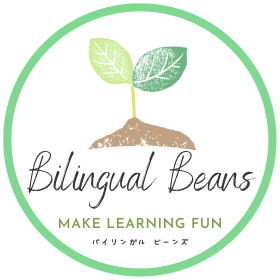
There are three recommendations for starting to navigate bilingual upbringing and language learning at home.
First set up your family language plan and your home environment then have children engage in daily routines to start their bilingual journey!

Establish a family language plan first. See and download the below form↴
You can learn the below four main strategies of bilingual parenting at home and other strategies including a recommended Hybrid Strategy from this form.
- One Parent-One Language (OPOL)
- Minority Language at Home (mL@H)
- “Time and Place” (T&P)
- Mixed Language Policy (MLP)
- Dual Language Immersion (Bilingual Immersion)
- Situational Bilingualism
- Hybrid Strategy (or Combined Method)

Create a literacy-rich home environment that helps foster ‘consistency‘ in language exposure and learning. This will also encourage meaningful family conversations. Research highlights the importance of everyday conversation and consistent language exposure and use in supporting language acquisition.

Have children engage in daily routines in a target language. Use child’s ‘familiar’ words daily and consistently. Prior to introducing numbers, the alphabet, or other academic content, focus on using action words or things a child likes and uses through daily routines.
Here are the example ‘familiar’ vocabularies that can be taught first: daily action words (e.g., give, want, eat, sleep, walk, play, jump), child’s favorite food and things (e.g., cookies, bread, rice, juice, milk, apples, oranges), and characters, people, or things they use or see in their daily lives. Using these words that are closely connected to their daily needs will provide children with strong motivations and engagement to use the target language and retain their attention and memories.

While immersing children in language learning through step 2 and 3 language input, have them engage in step 4 literacy foundation activities, followed by Step 5 hands-on language activities of your choice.
These activities are designed with a research-based, flexible framework for language learning. They allow the freedom to choose learning materials and content based on your child learners’ interests, in any order, with different hands-on language activities implemented.
↓↓
↑↑
